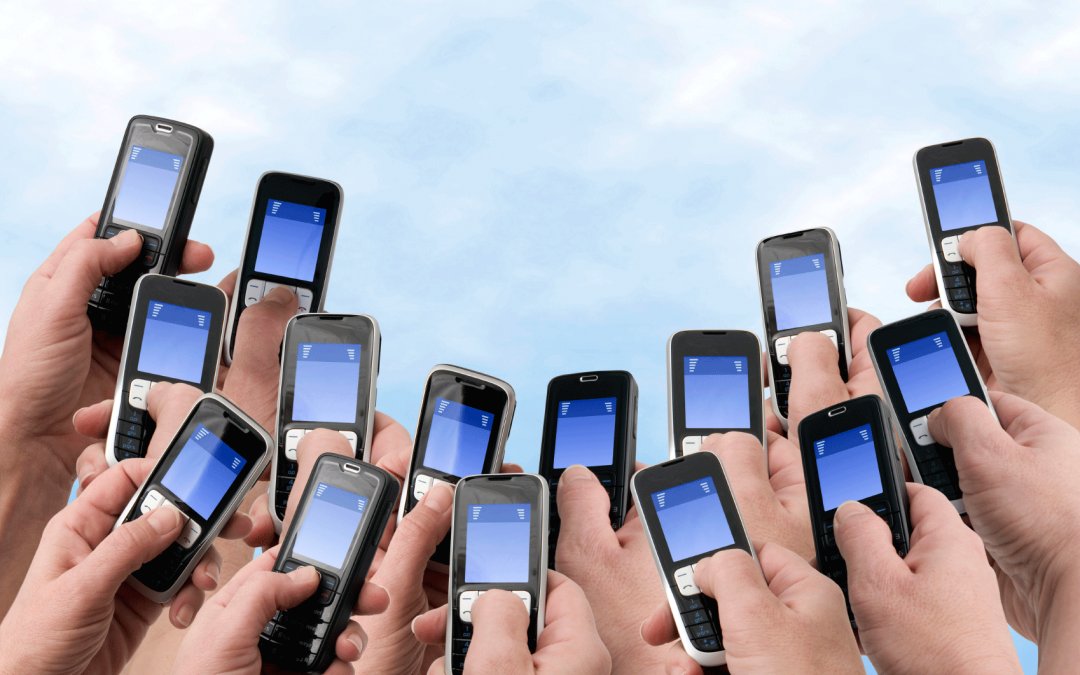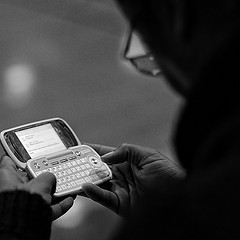
by Henk Auret | Sep 29, 2017 |
Even though impressive mobile marketing-related facts are regularly trotted out by the industry such as more people worldwide access the web via mobile browsers compared to desktop, some brands still think mobile is not for them. This is really unfortunate – especially in a mobile crazy, high potential country like the 55 million citizen South Africa. Firstly, let’s clarify what mobile marketing is really all about. According to a recently-released book of the same name, mobile is not a channel like social media, outdoor advertising or search; it is something that impacts all of the other marketing channels. Here at InTarget, we love that description because it clarifies that mobile ties it all together. In today’s hyperconnected world, mobile is the marketing glue that holds all of the consumer’s purchase-related decisions and actions together. While most of us would be familiar with mobile marketing through such obvious mobile tools as SMS, Please Call Me and location-based advertising; mobile is so much more. According to ‘Mobile Marketing’, it includes strategies and tools such as beacons, IM chatbots, virtual reality, mobile search, near-field communications (NFC) and more. Unfortunately, for SMEs and mid-sized owner-run businesses, terms like those listed above can make mobile marketing and advertising seem daunting. Take it from us: mobile is not only for large enterprises. With an experienced mobile specialist like InTarget, the small business owner will be talking the mobile business lingo like a pro in no time and generating the type of tangible business outcomes that make mobile campaigns so essential in challenging times. Speak to us about evaluating your SME’s current mobile marketing practices so...

by anton | Aug 23, 2016 |
While much innovation typically springs from the corporate sector, business people are naturally conservative. This cautious approach comes from the basic business need to make scarce resources work as efficiently as possible to deliver the best results. That’s the essence of capitalism. It’s natural then for the mobile marketer, who is a business person after all, to want to revert to mobile tactics that work. There’s nothing wrong with this approach besides the obvious downside of never exploring beyond the old reliable mobile channels of SMS and Please Call Me text tags. These are wonderful tactical tools, but as we have seen from the launch last year of InTarget’s USSD-based mobile research survey product, for example, there is so much more brands could be doing with the mobile marketing technology that’s available from world-leading specialist firms like InTarget right here in South Africa. With the above in mind, did you know that brands can create rich mobile experiences for their customers based on location and proximity? InTarget is able to bring location-powered mobile marketing to consumers using micro-location Bluetooth technology as well as macro-location geofencing. Our location and proximity mobile engagement platform can be tweaked to build rich, intelligent and compelling mobile experiences and campaigns to cellular users in the right place and at the right time. For example, a location-based mobile marketing campaign developed by InTarget could mean a conference organiser might provide attendees with a greeting when they land at the airport, the details of the closest driver to escort them to their hotel, and check-in information as they approach the venue’s concierge. Once settled in their...
by anton | Dec 31, 2015 |
As we say hello to 2016, and welcome all the opportunities that a brand new 12-month stretch holds, it’s perhaps pertinent to review some of the key mobile marketing learnings of the year that’s gone before us. Here are InTarget’s “Mobile Marketing Top 5”: 1. A good mobile campaign can directly translate into feet in stores, or tangible online purchases when time limits are applied to the special offer one is transmitting via SMS or OTT channels such as WhatsApp. Time limits add an immediacy that helps move stock. 2. The humble text message is an effective method of bulk one-to-many communication and one of the key tools in the mobile marketer’s tool kit. Underlining this, one overseas study found that in excess of 94% of all commercial text messages are actually read by the recipients. 3. Far from only competing for ad spend, mobile and traditional advertising are a perfect fit. The cellphone enables deeper and richer engagement with more traditional forms of media. The cellphone’s connected SIM card turns the mobile into a transactional device and means that users can rapidly respond to any promotion or invitation to interact with a brand displayed on radio, television, billboards, in magazines and other media. 4. The ‘Please Call me’ service holds enormous commercial opportunities for advertisers and is easily the jewel in the mobile marketing crown. Good news is that the golden opportunities made possible by Please Call Me can be exploited by practically any brand in South Africa and beyond through InTarget’s text-based ads tagged onto the end of Please Call Me messages. Text Tags are push notification...

by anton | Dec 18, 2015 |
InTarget continues to partner with some of South Africa and the Continent’s leading brands when it comes to exploiting the awesome mobile marketing opportunities offered by the ‘Please Call Me’ service. Most readers will know that InTarget’s established relationships mean it is able to commercialise this service highly-valued by literally tens of millions of prepaid cellular users. This is achieved by adding text tags onto the end of ‘Please Call Me’ messages for a specified time. Just as in SMS-based mobile advertising, there’s a certain art in composing or structuring text tags that get one’s message across in the most effective way. Here are a few tips that brand managers should bear in mind: 1. Don’t devalue the brand by reducing words to ‘SMS speak’ in an effort to save space. Using SMS abbreviations might be fine in casual conversation but consumers expect the brands they interact with to uphold a certain standard. 2. Because space is limited, don’t mix messages and ensure there is one clearly understandable call to action that’s also just a click away. 3. Know your audience by understanding that the products and services most suited to ‘Please Call Me’ text tags are usually low value recurring items that are also subscription or debit-order...




